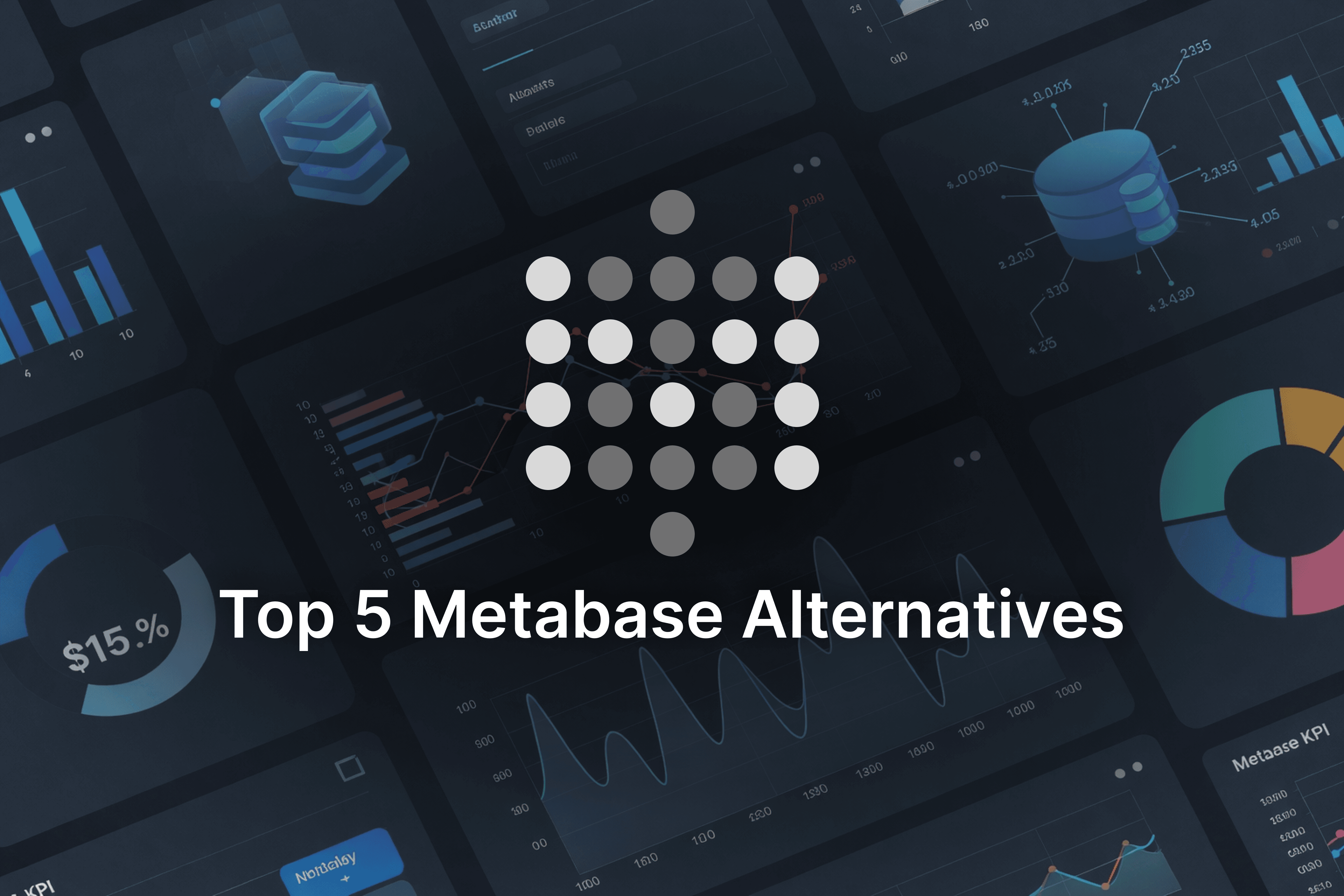This article dives into the battle between Tableau’s visual storytelling and Supaboard’s modern, plug-and-play dashboards. Discover how Supaboard outpaces Tableau in real-time analytics and AI-powered reporting for today’s fast-moving companies.

In 2026, businesses of all sizes are looking for better ways to work with data. Whether it's to understand sales trends, track customer behavior, or make day-to-day decisions, the need for accessible and fast analytics is growing.
Tableau is a well-known name in the business intelligence (BI) world. But many teams now want tools that are easier to use, faster to set up, and more suited for modern workflows. This has led to growing interest in Tableau alternatives.
This article compares Supaboard and Tableau to help you decide which might be the better choice for your team.
Supaboard vs Tableau: Quick Overview
Feature | Tableau | Supaboard |
|---|---|---|
Easy to Use | Steep learning curve | Simple for all users |
Natural Language Queries | Available, limited flexibility | Designed around plain-English queries |
AI Features | Available as add-ons | Built into the platform |
Setup Time | Longer setup with IT support | Setup in under 10 minutes |
Collaboration | Server-based sharing | Real-time document-style collaboration |
Privacy | Depends on configuration | Built-in privacy-first structure |
Performance | Strong, but needs tuning | Fast without manual setup |
Pricing | Varies, can be expensive | Transparent and predictable |
1. Is Tableau Easy to Use?
Tableau is powerful, but not always simple. Most new users need training before they can build useful reports. It’s common for companies to hire experts or dedicate resources to dashboard development.
Supaboard is designed to be easier. Users with no technical background can log in and start exploring data. Reports can be built by asking plain-English questions. While Supaboard does not match all of Tableau's advanced capabilities, it focuses on making analytics accessible for everyday business users.
2. Can You Ask Questions in Plain English?
Tableau has a feature called "Ask Data" that lets users type questions. It works well in some cases, but often needs the data to be organized in a specific way.
Supaboard is built to handle this kind of interaction from the start. It works with common business language and doesn't require users to know technical terms.
3. What About AI Features?
Tableau offers AI-powered tools like Explain Data and Einstein Analytics. These features can surface trends and provide automatic insights, but they usually need setup and user training.
Supaboard includes AI insights as part of its core platform. Users can explore trends, spot changes in metrics, and get suggestions without extra tools or licenses.
4. How Long Does Setup Take?
Setting up Tableau often takes time. Connecting data sources, configuring dashboards, and adjusting user access can involve IT teams.
Supaboard is designed to be quicker. It connects easily with tools like Google Sheets and HubSpot. Most users can get started on their own in less than 10 minutes.
5. How Well Do These Tools Support Collaboration?
Collaboration in Tableau typically happens through Tableau Online or Server. While these systems support sharing, they are not built for real-time teamwork.
Supaboard offers document-style collaboration. Multiple users can comment on and update dashboards at the same time. This makes it easier for teams to work together on the same report.
6. Is Data Privacy a Concern?
With Tableau, privacy depends on how it’s set up. Data may be stored on Salesforce infrastructure or third-party servers, depending on the version.
Supaboard uses a local-first approach. It is designed to minimize data movement and avoid sharing data with language models or external systems without consent.
7. How Do They Perform?
Tableau dashboards can be fast but often require tuning for large datasets. Data extracts, filters, and structure all affect performance.
Supaboard is optimized for speed by default. Dashboards load quickly, even with large data, and don’t require special setup.
8. How Do They Compare on Cost?
Tableau offers several pricing tiers, but costs can grow quickly, especially with multiple users and premium features.
Supaboard has a transparent pricing model with options for growing teams. While it doesn’t match every Tableau feature, its cost is easier to understand and predict.
Who is Tableau Best For?
Tableau is a strong choice for companies with full-time analysts or large-scale BI needs. It supports advanced modeling, in-depth customization, and enterprise-level security.
Who is Supaboard Best For?
Supaboard may be a better fit for fast-moving teams, small to mid-sized companies, or anyone who wants data insights without needing expert support. It's especially useful when speed, simplicity, and team-wide access are top priorities.
Conclusion: Is There a Better Tableau Alternative in 2026?
Tableau remains one of the most powerful BI platforms available. For many enterprise teams, it’s still the right choice.
But as more businesses look for tools that are faster, simpler, and more affordable, newer platforms are gaining attention. Supaboard is one of these platforms. While it may not offer every advanced feature Tableau does, it focuses on making analytics more accessible, and that makes it a serious alternative for many organizations in 2026.










